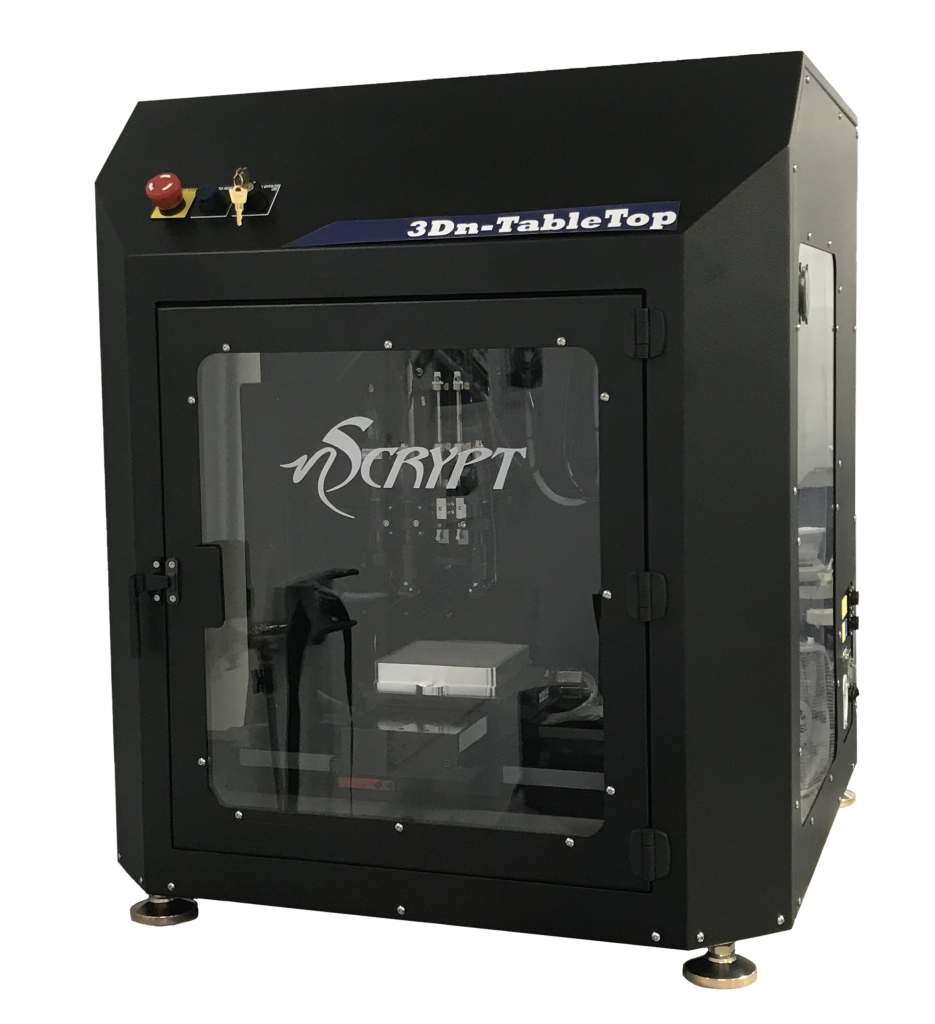Florida-based microdispensing specialist nScrypt‘s sister engineering company, Sciperio, is 3D printing CubeSats for the US Space Force employing the nScrypt Factory in a Tool (FiT).
The Small Business Innovation Research Program (SBIR) Phase II project focuses on the sophisticated manufacturing and assembly of 6U CubeSats. CubeSats are a type of nanosatellite that are developed to standard dimensions (Units or “U”) of 10 cm x 10 cm x 10 cm.
“Sciperio also improves functionality by 3D manufacturing each CubeSat as a printed electronic structure. This means that the satellite is not a box with electronics inside. Instead, the functionality is embedded into the structure of the CubeSat as it is being digitally manufactured by our system. The design is modular so that functionalities can be interchangeable. Because the system does all of this conformally, the CubeSat can be virtually any shape,” said Ken Church, CEO of both nScrypt and Sciperio.

What does nScrypt’s strategy entail?
The strategy of nScrypt is to obtain a brief design-to-deployment time by developing each launch-capable cube using one of its Factory in a Tool 3D manufacturing platforms. nScrypt’s FiT enhances satellite capabilities by incorporating electrical, thermal, and other capabilities into the structure. The company claims that 3D printing the CubeSat saves money since each satellite is built entirely on a single nScrypt system from a digital file with minimal human involvement.
“nScrypt’s FiT provides the ability to rapidly fabricate a small satellite to respond to an immediate need. For example, the Space Force will be able to react rapidly to meet new threats by compressing the time from design to orbit,” added Church.
The FiT manufactures multilayer electronics using multi-material deposition, integrated milling, pick and place, and drilling. For instance, after extruding one layer of the CubeSat’s structure, the system mills that layer to recognize an electronic trace and pick-and-placed electronic parts which cannot be printed. The extruder then deposits another layer of structure to incorporate the electronics. This procedure is repeated until the CubeSat is finished, including all of the electronics and other capabilities (such as solar sensors, detumbling coils, solar panels, magnetometers, strain gauges, temperature sensors, and accelerometers) ingrained into the structure’s walls or surface. Connections to the capabilities ingrained in the CubeSat will take place at the satellite base. The FiT will construct the power distribution module as a multiplayer printed electronic structure.

3D printed satellites ruling the space
Recently, Singapore-based 3D printing service provider Creatz3D introduced a novel, ultra-lightweight satellite launch container. The unique structure was designed in collaboration with partners Qosmosys and NuSpace to contain 50 gold-anodized artworks that were subsequently fired into orbit by SpaceX to commemorate the silver jubilee of the Pioneer 10 probe launch. Using 3D printing, the companies were able to decrease the mass of the satellite holder by over 50% while also significantly lowering its cost and lead time.
Previously, aerospace manufacturer Thales Alenia Space collaborated with Italian start-up MIPRONS to develop a novel water-fueled satellite propulsion system. The tiny, eco-friendly thruster was set to be built employing a combination of MIPRONS’ proprietary technology and 3D printing and will only utilize water as a propellant. As a result, once completed, the system is anticipated to enable quicker, cleaner satellite maneuvering while remaining small and scalable enough to launch devices of various shapes and sizes.
What does the future of 3D printing for the next ten years hold?
What engineering challenges will need to be tackled in the additive manufacturing sector in the coming decade?
To stay up to date with the latest 3D printing news, don’t forget to subscribe to the 3D Printing Industry newsletter or follow us on Twitter, or like our page on Facebook.
While you’re here, why not subscribe to our Youtube channel? Featuring discussion, debriefs, video shorts, and webinar replays.
Are you looking for a job in the additive manufacturing industry? Visit 3D Printing Jobs for a selection of roles in the industry.
Feature image shows nScrypt’s Factory in a Tool 3D printing system. Image via nScrypt.



